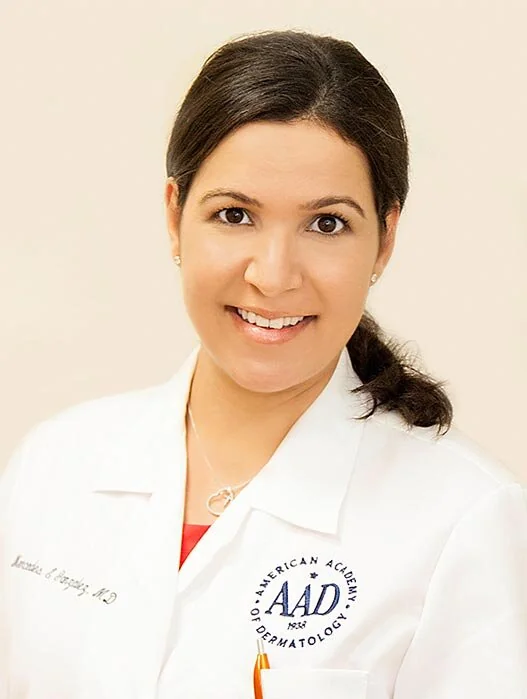
Alopecia, or hair loss, affects millions of individuals worldwide, and it’s especially concerning for children. Whether your child is dealing with hair thinning alopecia, alopecia areata, or other forms of hair loss, seeking effective treatment is crucial. The right treatment can help your child regain their hair and confidence, making it essential to find a Miami alopecia clinic that offers comprehensive care tailored to pediatric patients.
In this blog, we’ll help you navigate how to find the best alopecia clinic in Miami, focusing on specialized treatments such as alopecia treatment, hair thinning alopecia, and alopecia areata treatment for children. We’ll also explore the advantages of seeking care in Coral Gables, a hub for high-quality dermatological services. options.
What is Alopecia and What Causes It in Children?
Alopecia refers to hair loss that can occur for various reasons, and understanding the cause is crucial for determining the appropriate treatment for your child. Here are some common types of alopecia:
- Androgenetic Alopecia (Male and Female Pattern Baldness): A hereditary condition causing gradual hair thinning, typically starting at the temples or crown. It is rare in children but can occur in adolescence.
- Alopecia Areata: An autoimmune disorder where the immune system attacks hair follicles, causing round patches of hair loss. This is the most common form of alopecia in children.
- Cicatricial Alopecia (Scarring Alopecia): A rare type of alopecia resulting from inflammation that destroys hair follicles, causing permanent hair loss.
- Telogen Effluvium: A temporary shedding of hair, often caused by stress, hormonal changes, or illness, common in children.
Understanding the type and cause of alopecia in your child will help you make informed decisions about the treatment options available at an alopecia clinic in Miami.
Alopecia Treatment for Children: What You Need to Know
There are several treatments available to manage alopecia in children. A clinic specializing in pediatric alopecia treatment can offer advanced options tailored to your child’s needs:
- Topical Medications: Treatments like minoxidil (Rogaine) are effective for stimulating hair growth, particularly for hair thinning alopecia. It is FDA-approved for use in children over the age of 12.
- Finasteride: An oral medication that helps slow down hair loss and promote regrowth by blocking DHT, a hormone responsible for hair thinning in men. It’s less commonly prescribed to children due to potential side effects but can be used under a doctor’s supervision.
- Hair Transplant Surgery: For more severe cases of alopecia, hair transplant surgery such as Follicular Unit Extraction (FUE) is an option. This is usually recommended for older children or adolescents with advanced hair loss.
- Steroid Injections: Injections of steroids can help reduce inflammation and encourage hair regrowth in areas affected by alopecia areata.
Hair Thinning Alopecia: Pediatric Treatment Approaches
Hair thinning alopecia, also known as androgenetic alopecia, is more common in adults but can affect children, especially as they reach puberty. It typically starts as a gradual thinning of hair around the crown or along the hairline.
Effective treatments for hair thinning alopecia in children include:
- Minoxidil: This topical treatment is FDA-approved for children over 12 and is one of the most commonly used options for hair thinning alopecia.
- Finasteride: This oral medication can help block DHT, slowing hair thinning in older children and adolescents.
- Hair Transplant Surgery: For severe cases, hair transplant surgery can restore hair to thinning areas, though it’s typically recommended for older children.
A Miami alopecia clinic will conduct a comprehensive evaluation to determine the best course of treatment for your child’s specific type of hair thinning alopecia.
Alopecia Areata Treatment: Managing Autoimmune Hair Loss in Children
Alopecia areata is an autoimmune condition where the body’s immune system attacks healthy hair follicles, leading to round patches of hair loss. Though there is no cure for alopecia areata, effective treatments can help manage the condition and promote hair regrowth.
Common treatments for alopecia areata treatment in children include:
- Topical Corticosteroids: These medications help reduce inflammation and stimulate hair regrowth in affected areas.
- Topical Immunotherapy: This treatment involves applying chemicals to the scalp to cause a mild allergic reaction, which encourages hair growth.
- JAK Inhibitors: Research into Janus kinase inhibitors (like Tofacitinib) has shown potential in treating alopecia areata by targeting the immune responses causing hair loss.
How to Find the Best Alopecia Clinic in Miami for Pediatric Treatment
Finding the right alopecia clinic in Miami for your child is essential to getting effective treatment. Here are some tips for selecting the best clinic:
- Research Local Clinics: Look for clinics in Miami that specialize in treating alopecia in children. Online resources and patient reviews can help you identify reputable clinics that offer specialized pediatric care.
- Check Qualifications: Ensure that the clinic has board-certified dermatologists or pediatric trichologists with experience in treating childhood alopecia. It’s important that they are familiar with the latest treatments and techniques.
- Consultation: Schedule a consultation with the clinic to discuss your child’s hair loss concerns and treatment options. Many clinics offer free or low-cost initial consultations.
- Evaluate Treatment Options: Look for clinics that offer a comprehensive range of treatments, including topical medications, hair transplants, and the latest biologic therapies.
- Insurance and Payment Plans: Confirm whether the clinic accepts your insurance and inquire about payment plans for treatments that may not be covered by insurance.
Alopecia Clinic in Coral Gables: A Premier Destination for Pediatric Hair Loss Treatments
If you’re looking for a trusted alopecia clinic near Coral Gables, you’re in the right place. Coral Gables is home to some of the best dermatology clinics that specialize in pediatric alopecia treatment. These clinics offer advanced therapies and personalized care to help children manage their hair loss and restore their confidence.
Many clinics in Coral Gables offer a range of treatments, from hair transplants to biologic therapies. By visiting a clinic in this area, you’ll have access to top-tier dermatologists and cutting-edge treatments for pediatric alopecia.
Our Location
Coral Gables
4425 Ponce de Leon #115, Coral Gables, FL 33146, United States
Nearby Cities:


Request An Appointment
To request an appointment, please fill out the contact form below. Our team will get back to you as soon as possible to confirm your appointment and answer any questions you may have.
We look forward to assisting you.
Meet Our Medical Director
Mercedes E. Gonzalez M.D.
Dr. Mercedes E. Gonzalez is a board-certified pediatric dermatologist. After graduating from Emory University, she earned her degree at Rutgers–New Jersey Medical School in 2004. Always drawn to working with children, she accepted the prestigious pediatrics program at the Morgan Stanley Children’s Hospital of New York–Columbia University where she solidified her interest in treating skin disorders. She then completed a dermatology residency followed by a clinical fellowship in pediatric dermatology at the top-ranked New York University (NYU) Department of Dermatology.
Her gentle, child-friendly bedside manner, combined with her broad knowledge of childhood skin diseases and their treatments, make her the preferred pediatric dermatologist in Miami. In addition to practicing medicine, Dr. Gonzalez currently serves as a clinical assistant professor at The FIU Herbert Wertheim School of Medicine and The Phillip Frost Department of Dermatology at Miller School of Medicine.
Dr. Gonzalez serves as the Principal Investigator on numerous clinical trials and has a special interest in severe skin disease in children. She lectures regularly at Dermatology conferences and to medical students and residents and is the co-editor of 3 dermatology textbooks, including the recently published 2nd edition of Goodheart’s Same Site Differential Diagnosis, and has published over 50 journal articles.

